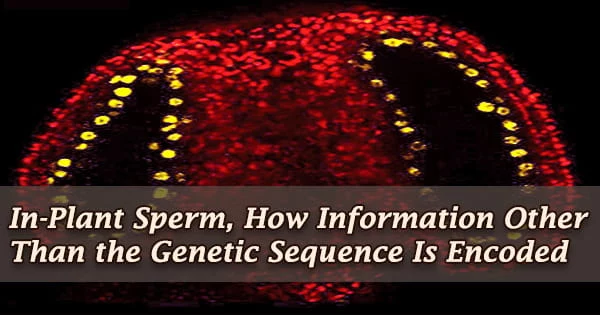Hereditary information is handed down through the generations through the genetic code, DNA, and epigenetically through chemically induced changes to the DNA. A process discovered by the John Innes Centre modifies these alterations, changing the way information outside the genetic code is handed down the generations.
One of these epigenetic changes is DNA methylation, which occurs when a methyl group or chemical cap is added to the DNA, turning on or off a gene or genes. Some methyl markers are reset when germline (eggs and sperm) cells mature, altering the information handed down to the following generation.
It’s unknown how this mechanism occurs during plant reproduction. The groundbreaking study, which was published in Science, elucidates the molecular process of DNA methylation reprogramming in plant male germlines. The pollen tube, a male sex organ, develops in length as it plows through tissue on its route to the female organs during plant reproduction.
According to a new study, when the tube is squeezed too tightly, it bursts and discharges sperm. Cells that will divide to make sperm (meiocytes) are surrounded by cells that nourish them inside the male reproductive portions of the plant (the anthers). Taptal cells are the name for these nurse cells.
The John Innes Centre researchers revealed that tapetal cells generate a large number of short RNA molecules, which they attribute to a protein called CLSY3, which is found only in tapetal cells in the anther. The movement of these short RNAs from tapetal cells to meiocytes has been demonstrated. Transposons (unstable genetic elements) having the same DNA coding are given new methyl marks.
“This discovery changes the way we think about epigenetic inheritance across generations in plants. Small RNAs produced by germline nurse cells can determine the DNA methylome in the sperm. The key role played by these small RNAs in determining the inherited DNA methylome indicates convergent functional evolution between plant and animal reproduction,” says corresponding author Dr. Xiaoqi Feng, group leader at the John Innes Centre.
This reprogramming prevents transposons from hopping around in germ cells, ensuring the genome’s integrity throughout generations. These short RNAs target genes in meiocytes that have similar DNA sequences to the source transposons, assisting in gene regulation and facilitating meiosis, a form of cell division that leads to the generation of sperm.
The discoveries have broad implications in both the plant and animal worlds, and they give a crucial new hint for the global epigenetics community. Previous research had indicated that cereal crops like maize and rice had comparable tapetal small RNAs, but why these short RNAs are crucial for fertility and yield was unknown.
This study’s mechanistic understanding points to new research avenues and may aid in the development of biotechnology to target DNA methylation in commercial crops. Sperm cells are unable to divide and have a short lifespan, but after fusing with egg cells during fertilization, a new creature emerges, beginning as a totipotent zygote. Joint first author Dr Jincheng Long said:
“Our study could open a new avenue of crop biotechnology. For example, through the manipulation of small RNA directed DNA methylation of the cells that directly contribute to seed formation and the breeding process.”
According to popular belief, sperm developed quickly. There is no concrete evidence, however, that sperm developed quickly or before other male traits. The study is also important in fundamentally biological terms, joint first author Dr. James Walker explains, “Our work demonstrates that paternal epigenetic inheritance is determined by tapetal cells, which drive reprogramming at a scale unprecedented in plants.”
“Our discovery of a chemical mechanism for de novo DNA methylation advances our knowledge of the process, demonstrating how fresh methyl marks are produced at specific locations in specific cells.”
















